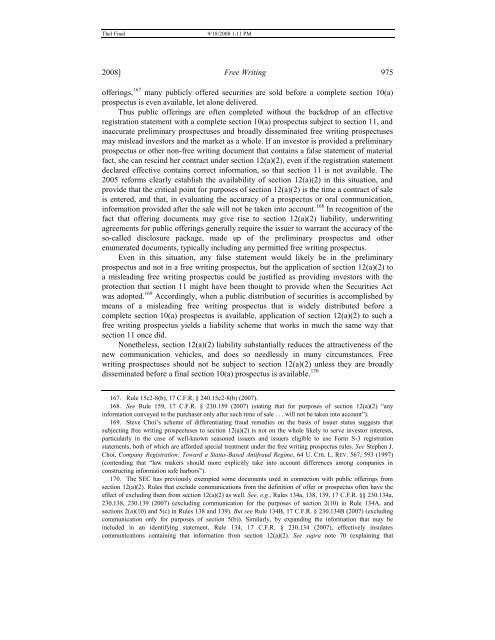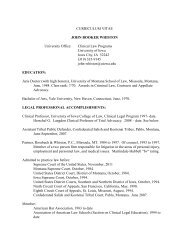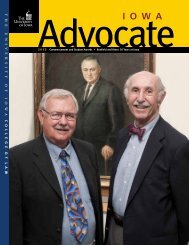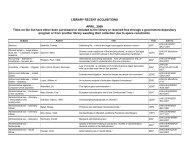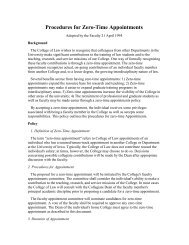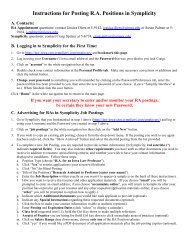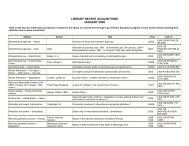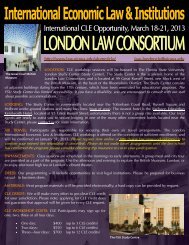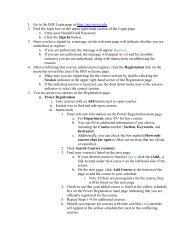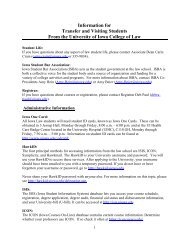Free Writing Steve Thel*
Free Writing Steve Thel*
Free Writing Steve Thel*
- No tags were found...
You also want an ePaper? Increase the reach of your titles
YUMPU automatically turns print PDFs into web optimized ePapers that Google loves.
Thel Final9/18/2008 1:11 PM2008] <strong>Free</strong> <strong>Writing</strong> 975offerings, 167 many publicly offered securities are sold before a complete section 10(a)prospectus is even available, let alone delivered.Thus public offerings are often completed without the backdrop of an effectiveregistration statement with a complete section 10(a) prospectus subject to section 11, andinaccurate preliminary prospectuses and broadly disseminated free writing prospectusesmay mislead investors and the market as a whole. If an investor is provided a preliminaryprospectus or other non-free writing document that contains a false statement of materialfact, she can rescind her contract under section 12(a)(2), even if the registration statementdeclared effective contains correct information, so that section 11 is not available. The2005 reforms clearly establish the availability of section 12(a)(2) in this situation, andprovide that the critical point for purposes of section 12(a)(2) is the time a contract of saleis entered, and that, in evaluating the accuracy of a prospectus or oral communication,information provided after the sale will not be taken into account. 168 In recognition of thefact that offering documents may give rise to section 12(a)(2) liability, underwritingagreements for public offerings generally require the issuer to warrant the accuracy of theso-called disclosure package, made up of the preliminary prospectus and otherenumerated documents, typically including any permitted free writing prospectus.Even in this situation, any false statement would likely be in the preliminaryprospectus and not in a free writing prospectus, but the application of section 12(a)(2) toa misleading free writing prospectus could be justified as providing investors with theprotection that section 11 might have been thought to provide when the Securities Actwas adopted. 169 Accordingly, when a public distribution of securities is accomplished bymeans of a misleading free writing prospectus that is widely distributed before acomplete section 10(a) prospectus is available, application of section 12(a)(2) to such afree writing prospectus yields a liability scheme that works in much the same way thatsection 11 once did.Nonetheless, section 12(a)(2) liability substantially reduces the attractiveness of thenew communication vehicles, and does so needlessly in many circumstances. <strong>Free</strong>writing prospectuses should not be subject to section 12(a)(2) unless they are broadlydisseminated before a final section 10(a) prospectus is available. 170167. Rule 15c2-8(b), 17 C.F.R. § 240.15c2-8(b) (2007).168. See Rule 159, 17 C.F.R. § 230.159 (2007) (stating that for purposes of section 12(a)(2) “anyinformation conveyed to the purchaser only after such time of sale . . . will not be taken into account”).169. <strong>Steve</strong> Choi‟s scheme of differentiating fraud remedies on the basis of issuer status suggests thatsubjecting free writing prospectuses to section 12(a)(2) is not on the whole likely to serve investor interests,particularly in the case of well-known seasoned issuers and issuers eligible to use Form S-3 registrationstatements, both of which are afforded special treatment under the free writing prospectus rules. See Stephen J.Choi, Company Registration: Toward a Status-Based Antifraud Regime, 64 U. CHI. L. REV. 567, 593 (1997)(contending that “law makers should more explicitly take into account differences among companies inconstructing information safe harbors”).170. The SEC has previously exempted some documents used in connection with public offerings fromsection 12(a)(2). Rules that exclude communications from the definition of offer or prospectus often have theeffect of excluding them from section 12(a)(2) as well. See, e.g., Rules 134a, 138, 139, 17 C.F.R. §§ 230.134a,230.138, 230.139 (2007) (excluding communication for the purposes of section 2(10) in Rule 134A, andsections 2(a)(10) and 5(c) in Rules 138 and 139). But see Rule 134B, 17 C.F.R. § 230.134B (2007) (excludingcommunication only for purposes of section 5(b)). Similarly, by expanding the information that may beincluded in an identifying statement, Rule 134, 17 C.F.R. § 230.134 (2007), effectively insulatescommunications containing that information from section 12(a)(2). See supra note 70 (explaining that


